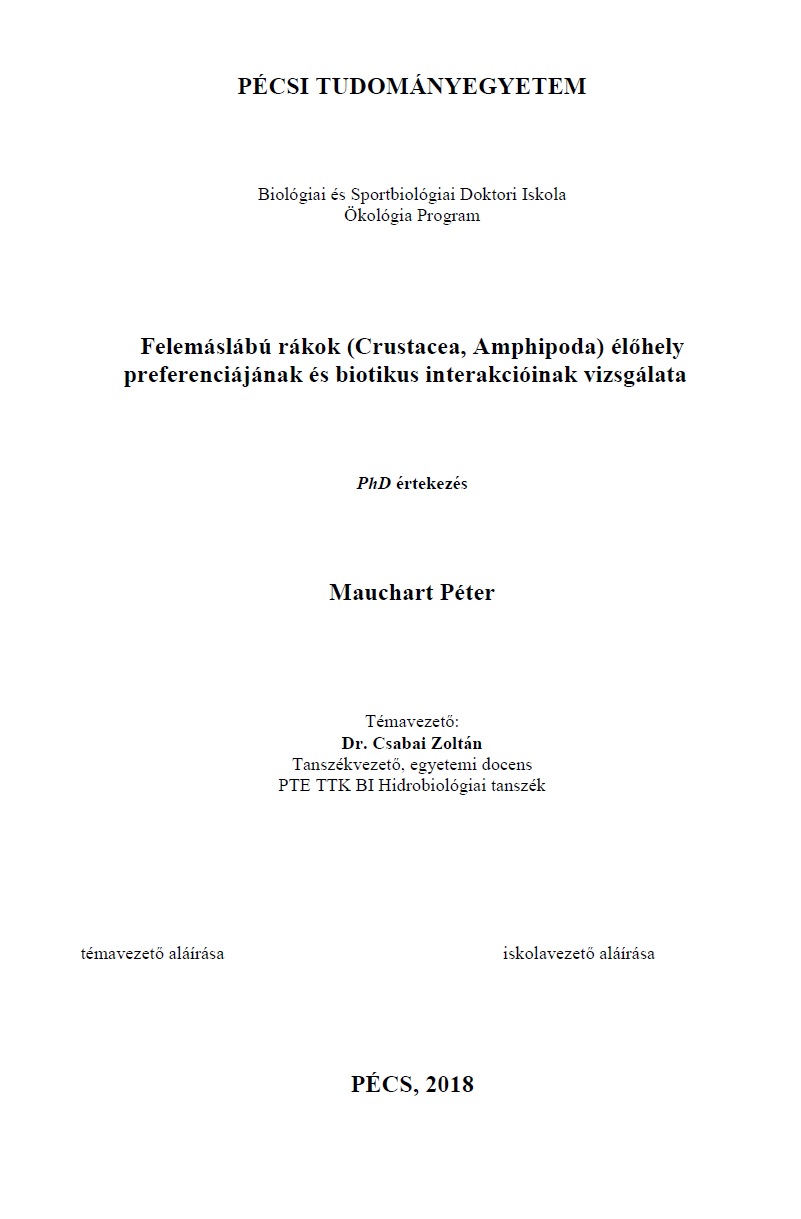Felemáslábú rákok (Crustacea, Amphipoda) élőhely preferenciájának és biotikus interakcióinak vizsgálata
Abstract
The order of amphipods (Amphipoda), like most of the macroscopic crustaceans is belonging to the Malacostraca class. Despite most of the amphipods are can be found in marine environments, they inhabit a broad spectrum of freshwater habitats as well. Epibenthic groups are much more diverse and are usually bounded to the littoral vegetation in lakes and rivers or, to the sediment of small streams and springs (Väinölä et al., 2008). To reveal their ecological role as accurately as possible is urgent, because of their enormous number of individuals and biomass, they clearly stand out from the rest of the aquatic macroinvertebrates. As amphipods are occupying central position in freshwater food webs, they have a significant ecological role in the communities of flowing water systems. However, we have only limited information about their behavior and ecological needs.Niche segregation depends on multiple influencing factors, including available resources, habitat variability and structure, and consequently the temporal and spatial patterns of species (abundances and densities of competitors and mutualists) (Chesson, 2000; Chase & Leibold, 2003). Accordingly, the habitat choice of freshwater gammaridscan be influenced by a complex sequence of interacting biotic andabiotic factors (Dahl & Greenberg, 1996). The factors that may affect the distribution and number of Gammarusspecies can be grouped as follows: (1) environmental variables that determine the habitat choice of species regardless of other species (Savage, 1996), (2) differences in life cycle characteristics and fecundity (Pöckl, 1993) (3) biotic interactions such as predation and competition (Dick et al., 1994; Dick, 1996; MacNeil et al., 1999).

